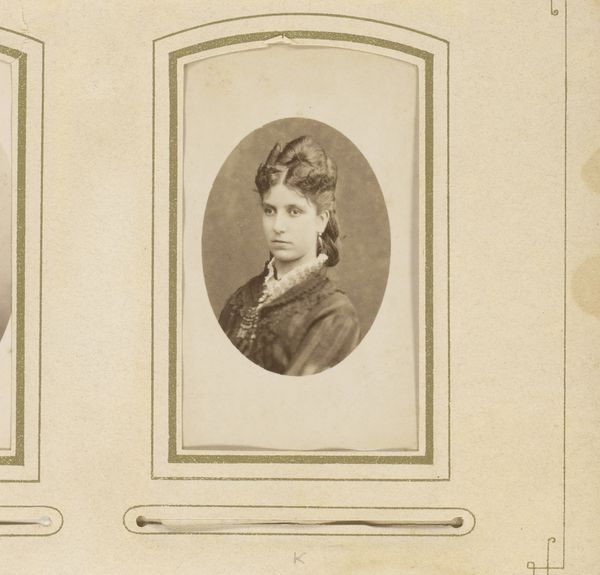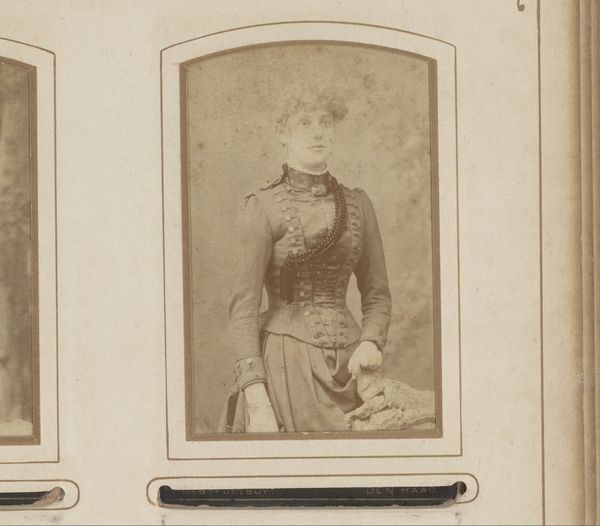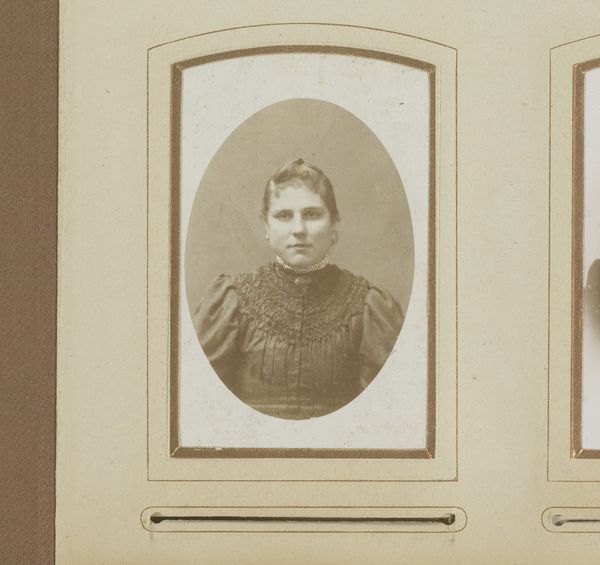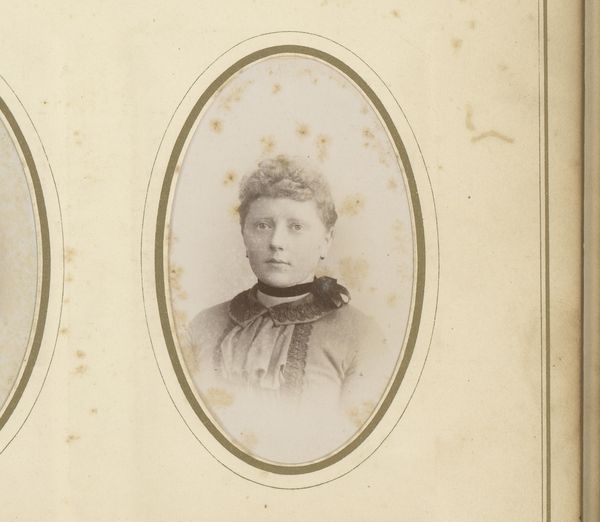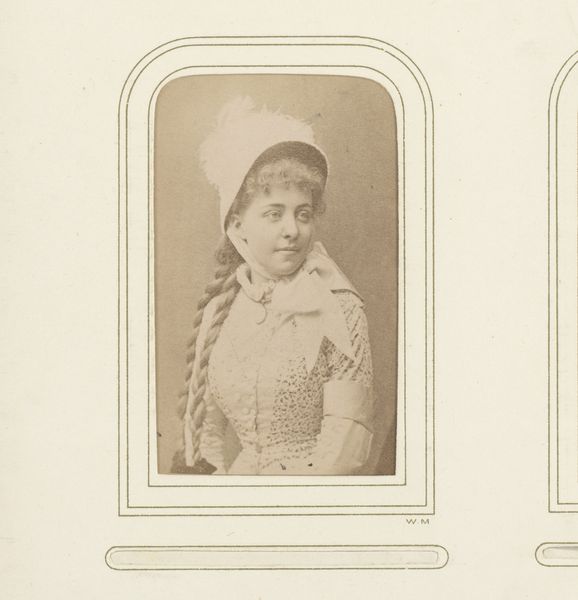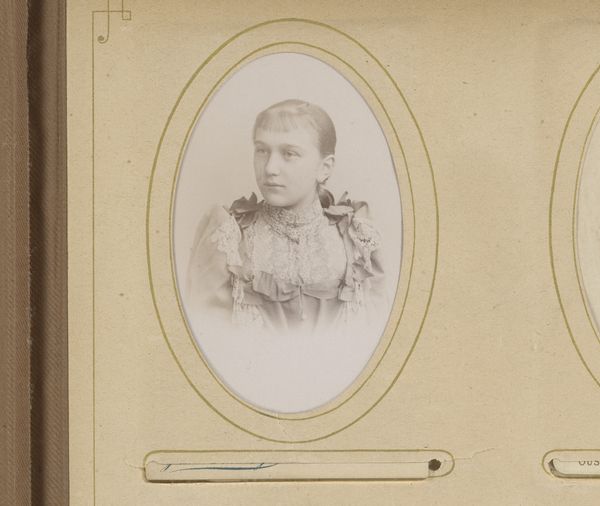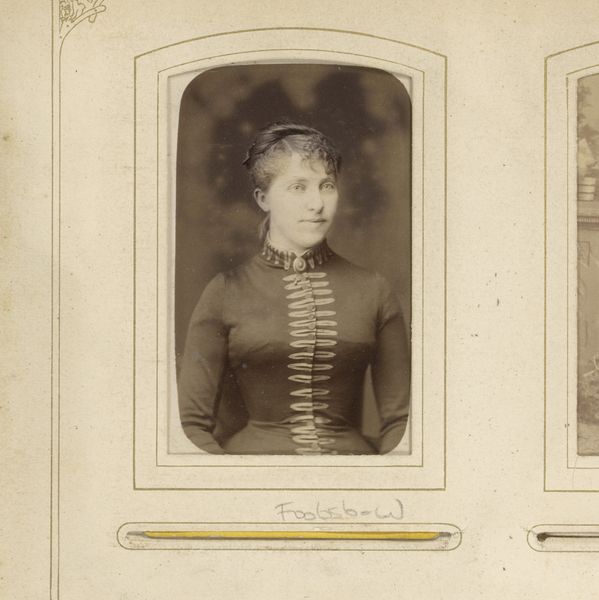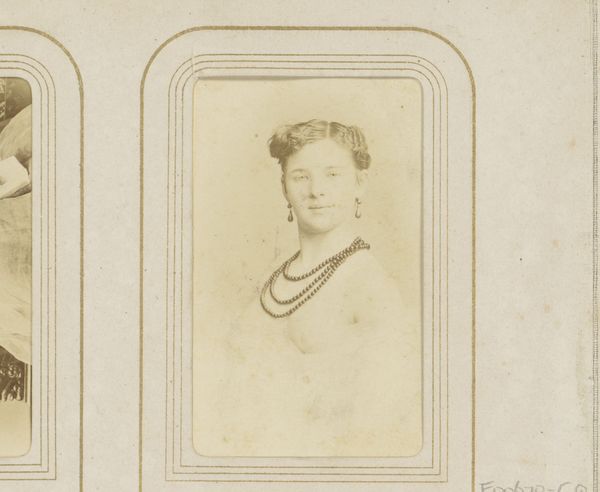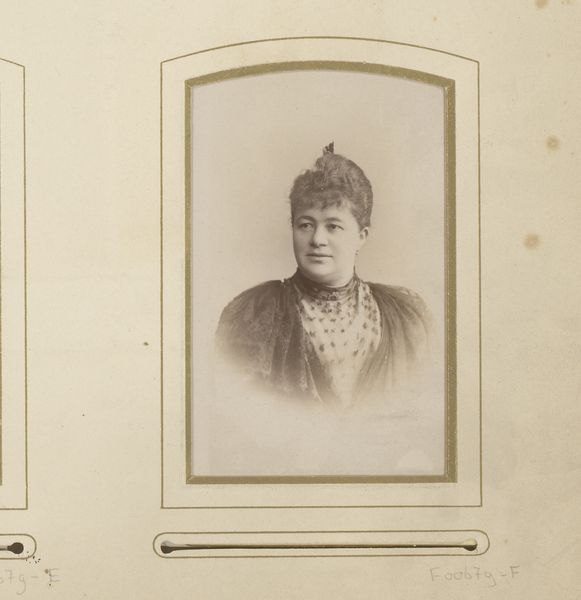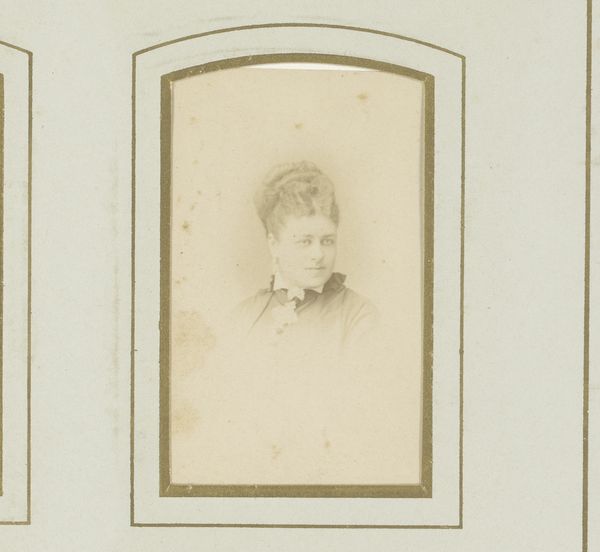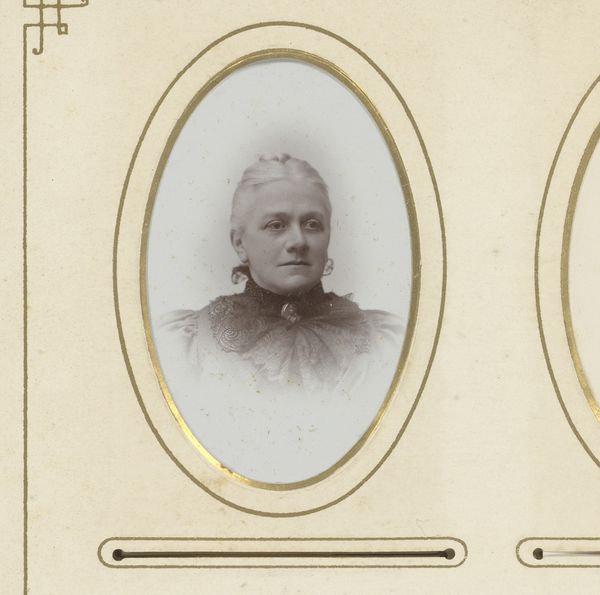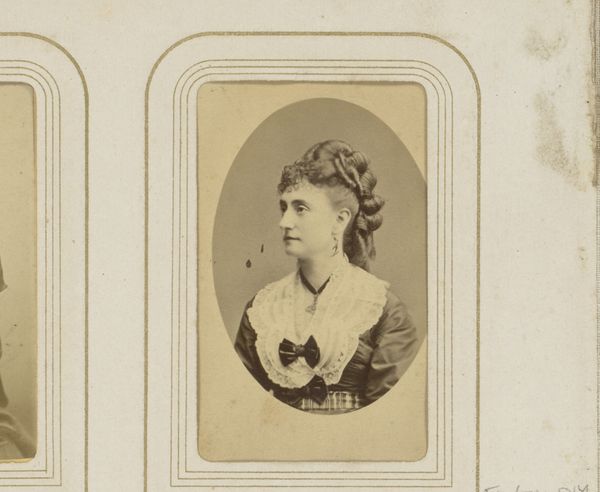
photography, albumen-print
#
photography
#
albumen-print
#
realism
Dimensions: height 84 mm, width 51 mm
Copyright: Rijks Museum: Open Domain
Curator: Here we have "Portret van een vrouw" by Nadar, created sometime between 1878 and 1890. It's an albumen print. Editor: There’s such a quiet elegance to it, don't you think? Like a whispered secret from a bygone era. That soft, faded tone… almost ghostly. Curator: The albumen print process itself is quite fascinating. Egg whites were used to bind the photographic chemicals to the paper. It really elevated photography to a respected art form. Editor: It makes you consider the labour, doesn’t it? All those eggs, just to capture one face. And whose labor was it? It likely wasn't Nadar, so this piece gestures towards production, and therefore class and gender dynamics of 19th century photography. Who was being hired to do this sort of work and how were they treated? Curator: Exactly! And Nadar, of course, was a well-known portraitist and caricaturist in Paris. He photographed many notable figures of the time, though this particular woman remains unidentified. The pose is formal but there is a certain openness to her gaze that intrigues me. It almost seems like she is peering beyond the constraints of the photograph, defying its boundaries. Editor: Her attire suggests a woman of means. Look at the details of her dress, that lace collar and jewelry. These portraits become powerful records of consumption habits. And who was she consuming exactly when being turned into this representation? She certainly got the portrait... and paid for it... but maybe others consumed her by gawking at the representation! I find myself drawn into imagining her daily life within the social structure. Curator: I love how it makes us ponder and the past of the people that are so vastly different and the same as us, really. It speaks of identity, of loss and beauty, don’t you think? Editor: Definitely! From albumen print to data point, it is so fascinating to trace the transformation from physical object to art to representation across time.
Comments
No comments
Be the first to comment and join the conversation on the ultimate creative platform.


